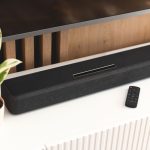The right backpack can make or break your travel experience. Whether you’re heading off on a weekend getaway, a cross-country trip, or an international backpacking adventure, your travel backpack is your most essential companion. It carries your gear, keeps you organized, and often ends up on your shoulders for hours.
But with countless styles, sizes, and features on the market, how do you pick the right one? Choosing a backpack is not just about looks — it’s about comfort, functionality, and long-term value. Here’s a complete guide to help you select the best travel backpack for your needs.
Know Your Travel Style and Trip Length
The first step is figuring out what kind of traveler you are and how long you’ll be on the move.
-
Weekend Trips (1–3 days): A 20–30L backpack is often enough for essentials and a change of clothes.
-
Week-Long Trips (4–7 days): Consider a 30–50L backpack with thoughtful compartments.
-
Long-Term Travel (1+ weeks): You’ll need a 50–70L pack for added capacity and comfort.
-
International Backpacking or Hiking: A larger, well-padded backpack with a frame and adjustable straps is crucial.
The size of your backpack should match your packing habits. If you’re a minimalist, you can pack light even for longer trips. If you tend to overpack, go for a bag with built-in compression or expandable storage.
Choose the Right Backpack Size and Fit
Backpack capacity is measured in liters, but size is also about how well the backpack fits your body. Look for:
-
Torso Length Fit: A good pack should sit comfortably from your shoulders to your hips.
-
Hip Belt Support: This helps distribute weight evenly, taking pressure off your shoulders.
-
Adjustable Straps: Shoulder, sternum, and hip straps should all be adjustable to your frame.
Try the backpack on when it’s fully packed, if possible. A proper fit can prevent back strain, fatigue, and long-term discomfort.
Consider Access and Organization
Not all backpacks are designed the same way. The way you access your gear is just as important as what the bag can hold.
-
Top-Loading: Great for hiking or camping, but not as easy to access gear at the bottom.
-
Front-Loading or Clamshell: Opens like a suitcase, making it easier to see everything at once.
-
Panel Access with Compartments: Ideal for organized travelers who like to keep things separated.
For travel, front-loading backpacks with organized compartments are usually the most efficient. Look for bags with separate areas for shoes, electronics, toiletries, and clothes.
Prioritize Comfort and Support
When you’re walking through airports, commuting across cities, or exploring off-the-beaten paths, comfort is critical. Key comfort features include:
-
Padded Shoulder Straps: Reduces pressure and helps with weight distribution.
-
Ventilated Back Panel: Allows airflow to prevent sweating.
-
Adjustable Chest and Hip Straps: Keeps the pack stable while walking or hiking.
-
Internal Frame: Keeps the bag’s structure and shifts weight toward your hips.
A good travel backpack will feel balanced and snug without restricting movement.
Pay Attention to Material and Durability
Your backpack needs to survive rain, zippers tugged at high speed, overhead bins, and dusty trails. Look for:
-
Water-Resistant or Waterproof Materials: Nylon and polyester are popular choices.
-
Ripstop Fabric: Designed to prevent tears from spreading.
-
Reinforced Stitching: Especially on load-bearing areas like shoulder straps.
-
YKK Zippers: Known for durability and smooth operation.
Durability isn’t just about the outside — high-quality materials inside the bag (like tear-resistant linings) are important too.
Think About Security Features
When you’re traveling, especially internationally, security is essential. Your backpack should help you protect your valuables.
-
Lockable Zippers: Look for zippers with loops for padlocks.
-
Hidden Pockets: Ideal for passports, cash, or ID.
-
Slash-Resistant Straps: Especially useful in crowded areas or cities.
-
RFID-Blocking Compartments: Protects credit cards and passports from electronic theft.
These features provide peace of mind whether you’re in a hostel dorm, airport terminal, or a crowded street market.
Consider Tech-Friendliness
For digital nomads or travelers who carry devices, a tech-friendly backpack is essential.
-
Laptop Compartment: Padded and secure, ideally suspended above the bottom of the bag.
-
USB Charging Ports: Some packs come with built-in USB ports to connect your power bank.
-
Cable Routing: Internal sleeves or holes that allow you to charge devices while walking.
-
Tablet and Accessory Sleeves: Keeps cords, chargers, and gadgets neatly packed.
Make sure your backpack can accommodate your gear without risking damage.
Look for Travel-Friendly Extras
Some bonus features can make a big difference during long journeys:
-
Luggage Strap or Pass-Through: Lets you attach your backpack to rolling luggage.
-
Compression Straps: Helps stabilize your load and reduce bulk.
-
Stowable Straps: Useful if you’re checking the bag — prevents tangles and snags.
-
Rain Cover: Included or built-in covers protect your gear in wet conditions.
-
Hydration Port or Pouch: If your adventures include hiking or biking.
These features add convenience, especially for active travelers or frequent flyers.
Style and Aesthetics
While functionality comes first, there’s nothing wrong with wanting your backpack to look good.
-
Neutral Colors: Black, gray, navy — ideal for airports and cities.
-
Bright Colors or Patterns: Easier to spot and more personal.
-
Minimalist Design: Ideal for blending into urban environments.
Choose a backpack that suits your personality and intended use. Some travelers prefer professional-looking bags, while others opt for rugged outdoor aesthetics.
Set a Realistic Budget
You don’t need to break the bank to find a high-quality backpack, but very cheap options often lack durability and comfort.
-
$50–$100: Budget-friendly packs for light travel and weekend use.
-
$100–$200: Good mid-range packs with solid features and durability.
-
$200 and above: Premium models with advanced support, materials, and organization.
Think of your backpack as a long-term investment. A slightly higher upfront cost often pays off with better performance and durability.



